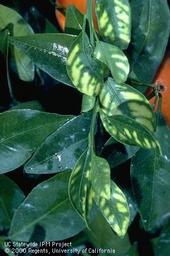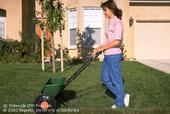
As you practice social distancing during COVID-19, you may find yourself spending more time in the garden. As we move into nice weather, we are sharing a few gardening tips for pest management.
Fertilizing
Now is the time to fertilize caneberries, citrus, fruit trees, palms, and heavily-flowering shrubs with slow release products. Maintaining good fertilization can keep your plants vigorous and help prevent pest problems.
Read more about plant-specific fertilization information on our website and see our other April gardening tips on

Keep your lawn healthy during summer and throughout the year by learning more about proper mowing, watering, pest control, and maintenance. To do this, refer to the UC Guide to Healthy Lawns, an online publication specifically about lawn care.
What's Your Grass Type?
Knowing what kind of turfgrass you have can help you determine the best way to take care of it since different grass species often have different needs or pest issues. Use the Turf Species guide for identification help. Common turfgrass species that are best adapted to California...
- Author: Karey Windbiel-Rojas
![A drop fertilizer spreader. [Photo by Steven Lock]](https://ucanr.edu/blogs/UCIPMurbanpests/blogfiles/24837small.jpg)
Fall is just around the corner so it's time to start thinking about fertilizing your lawn. All types of lawns are actively growing during the fall months. Fertilizer applied at this time will help ensure that turfgrass is vigorous enough to outcompete weeds and resist other potential pest problems.
For best growth, most lawns need to be fertilized two to three times a year, at least once in fall and once in spring. Nitrogen is the only nutrient that turfgrass needs on a regular basis. However, it may be beneficial to apply a complete fertilizer containing nitrogen, phosphorus, and potassium at least once a year.
Many retail nurseries and garden centers carry both quick-release and slow-release fertilizers. Although more...


